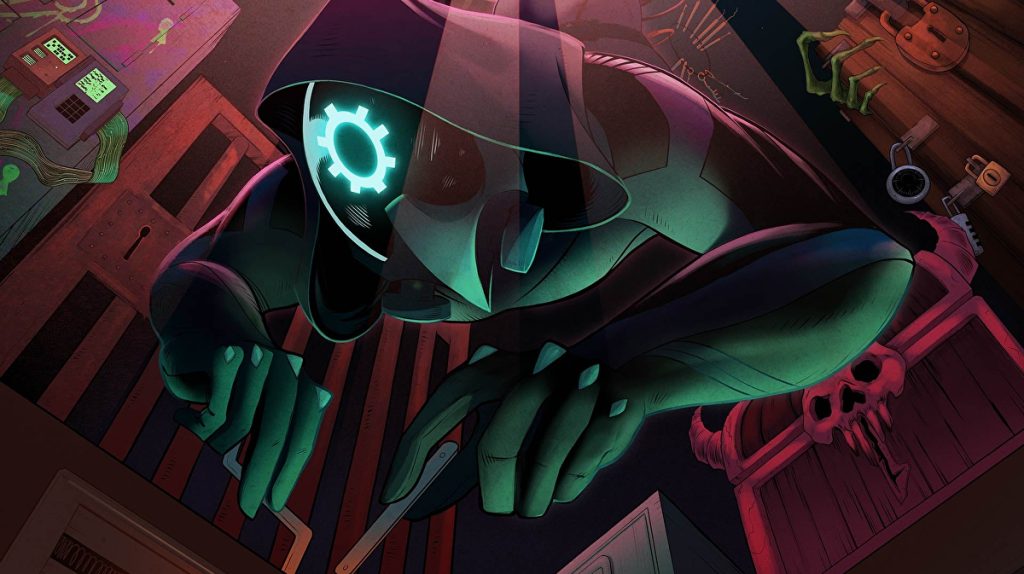Dim Bulb Games’ Museum of Mechanics: Lockpicking is a fascinating concept. Before we even get to the curiosity inherent in something like lockpicking, the very idea of a “museum of mechanics” is a brilliant one—not a “game” in the typical sense, but an interactive library, a point of reference, and a form of commentary, all looking at the ways different games have taken different approaches to the same problem. It’s made more for game developers than a general audience, really—and says as much in its introduction—but for anyone with an interest in game design and game history, it’s an intriguing thing to explore.
At its most basic level, Museum of Mechanics: Lockpicking is exactly what it sounds like: an assortment of lockpicking minigames from various other games, from tabletop RPGs to immersive sims, from Elder Scrolls and Mass Effect to Frogwares’ Sherlock Holmes games and Jenny LeClue. A “browsable buffet of example mechanics for lockpicking”, mostly simplified versions of what appeared in the original games for the sake of convenience, but a way of getting a sample of the many different ways games have mechanised lockpicking over the years.

If you like picking locks, the fun of playing these minigames is intrinsic. But the emphasis here is on the museum: it’s not just about playing games, but understanding how they work, and tracing that history. Each exhibit is accompanied by a plaque with background information that offers a bit of insight into the original context of the minigame in question and some under-the-hood explanation of the mechanics at play, as well as analysis from game designer Johnnemann Nordhagen.
A lot of games try to replicate, to the extent that it’s possible, actual lockpicking, emphasising care and precision as you carefully move tumblers and pay heed to easy-to-miss cues. But what Museum of Mechanics demonstrates is the sheer variety of ways game developers have dealt with this idea. There are a lot of different designs even within the “authentic” genre of lockpicking minigame, but you’ve also got the more puzzle-like style of The Testament of Sherlock Holmes and Jenny LeClue, Mass Effect’s Frogger-esque attempt to visualise “hacking”, and the random nature of dice rolls in Dungeons and Dragons.
But from the most authentic to the most abstract, from the most effective to the most dull, all these different designs are pieces of the history of game development that this museum seeks to preserve. Johnnemann is a talented designer (if you haven’t played Where the Water Tastes Like Wine, do yourself a favour and check it out), and he’s got plenty of worthwhile insights into the how and why of all these different minigames. How does a particular implementation fit into the rest of the game it’s a part of? What sort of mood do different approaches to lockpicking, something that seems wholly mechanical, invoke?

This is the real worth of Museum of Mechanics: Lockpicking. As a collection of minigames, how much you get out of it really depends on how much you enjoy lockpicking—and even if you like them a lot, even with the different variables and difficulty levels that many of the games in this collection include, there’s only so many times you can pick a lock for its own sake. But for a game designer looking for inspiration for their own lockpicking system, or a historian connecting the dots between Dungeons and Dragons and Mass Effect, or someone with an insatiable thirst to understand how things work, it’s great. As a handy collection of points of reference and a way of understanding how different designs work—on thematic and contextual levels, as much as mechanical—it’s invaluable.
I just hope this Museum of Mechanics does well enough to be the first of many.

